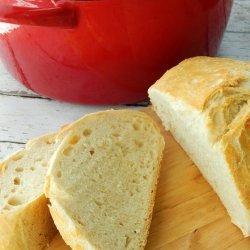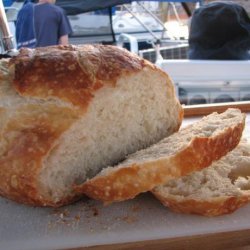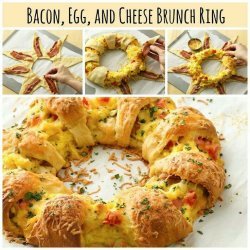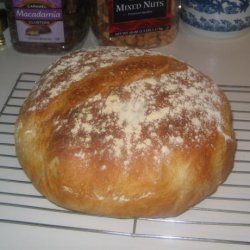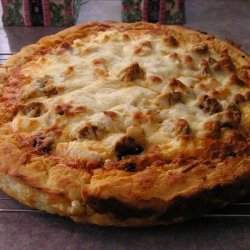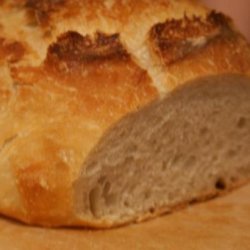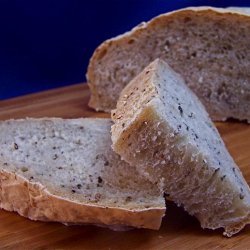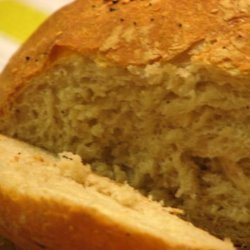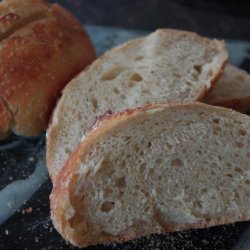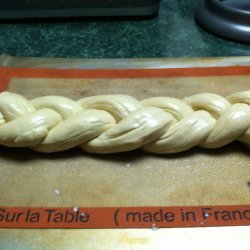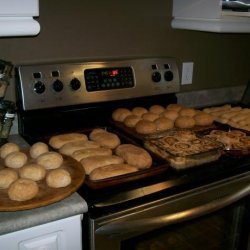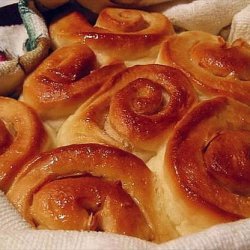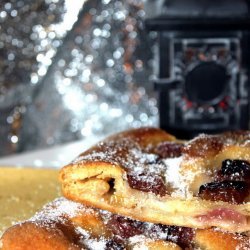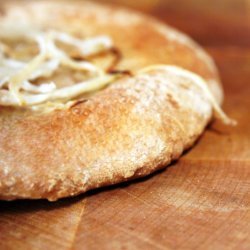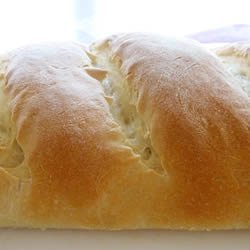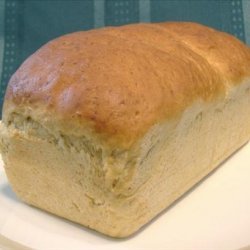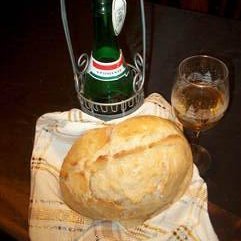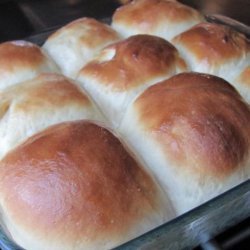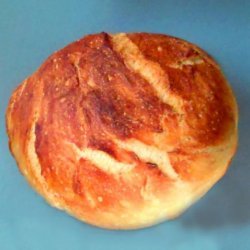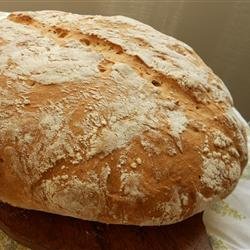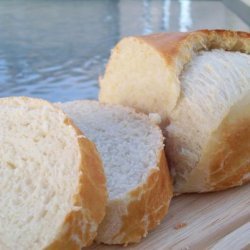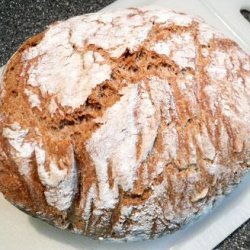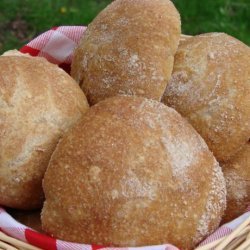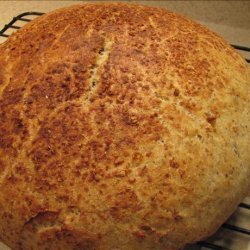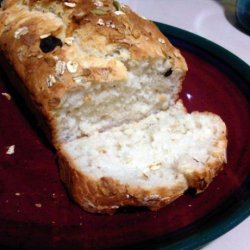Directions:
- Whisk flour, yeast, and salt in large bowl. Add water, beer, and vinegar. Using rubber spatula, fold mixture, scraping up dry flour from bottom of bowl until shaggy ball forms. Cover bowl with plastic wrap and let sit at room temperature for 8 to 18 hours.
- Lay 12- by 18-inch sheet of parchment paper inside 10-inch skillet and spray with nonstick cooking spray. Transfer dough to lightly floured work surface and knead 10 to 15 times. Shape dough into ball by pulling edges into middle. Transfer dough, seam-side down, to parchment-lined skillet and spray surface of dough with nonstick cooking spray. Cover loosely with plastic wrap and let rise at room temperature until dough has doubled in size and does not readily spring back when poked with finger, about 2 hours.
- About 30 minutes before baking, adjust oven rack to lowest position, place 6- to 8-quart heavy-bottomed Dutch oven (with lid) on rack and heat oven to 500 degrees. Lightly flour top of dough and, using razor blade or sharp knife, make one 6-inch-long, 1/2-inch-deep slit along top of dough. Carefully remove pot from oven and remove lid. Pick up dough by lifting parchment overhang and lower into pot (let any excess parchment hang over pot edge). Cover pot and place in oven. Reduce oven temperature to 425 degrees and bake covered for 30 minutes. Remove lid and continue to bake until loaf is deep brown and instant-read thermometer inserted into center registers 210 degrees, 20 to 30 minutes longer. Carefully remove bread from pot; transfer to wire rack and cool to room temperature, about 2 hours.
- Note: See the related information in High-Heat Baking in a Dutch Oven for information on converting Dutch oven handles to work safely in a hot oven. How can I keep my Dutch oven safe when baking in a really hot oven? Our recipe for Almost No-Knead Bread calls for preheating a Dutch oven to 500 degrees. After publishing our recipe, it was called to our attention that the manufacturers of both our favorite Dutch oven (the 7 1/4-Quart Round French by Le Creuset) and our best buy Dutch oven (the 6.5 Quart Cast Iron Dutch Oven by Tramontina) recommend against heating the pots to this temperature, due to the phenolic knobs used on the lids. And we subsequently learned that in certain instances, the pot itself might crack.
- SOLVING THE KNOB PROBLEM: Fortunately, there are two easy solutions. The knobs on both lids are secured with a single screw that is very easily removed. Once the knob is removed you can replace it with an inexpensive all-metal drawer handle purchased from a hardware store. Alternatively, Le Creuset has introduced a stainless steel replacement knob for its Dutch ovens (which also fits perfectly on the Lodge enameled Dutch oven and the Chefmate Dutch oven), available for around $10, which is completely oven-safe. To fit this knob on the Tramontina Dutch oven, you’ll need to use a single 3/8-inch-diameter, 3/4-inch-long machine screw—the 1/2-inch screw that comes with the knob is not long enough to fit through the thicker lid of the Tramontina.
- DEALING WITH THE CRACKING ISSUE: The enamel coating on cast-iron pots is made of vitrified glass. Although this material is built to withstand years of cooking, it can crack if the pot is dropped, the enamel has been improperly applied, or thermal shock occurs. Thermal shock may occur if a cold, empty pot is placed in a hot oven; if an empty pot is heated and then filled with cold food; or if a hot pot is placed on a cold surface. According to Le Creuset and Lodge (two of the leading manufacturers of enameled cast iron), the risk for thermal shock with our Almost No-Knead Bread recipe is low. The recipe calls for placing a cold pot in a cold oven, heating the oven to 500 degrees, and then placing room-temperature dough into the pot. Both manufacturers agree that there would be a much greater risk of thermal shock if cold food, liquid, or oil were placed in the hot pot. To prevent thermal shock when the pot is removed from the oven, place it on a wire rack or trivet or on the cooking grate of the stove.
- Use a mild-flavored lager, such as Budweiser (mild non-alcoholic lager also works). The bread is best eaten the day it is baked but can be wrapped in aluminum foil and stored in a cool, dry place for up to 2 days.
Nutrition Facts
| Amount Per 1 Serving | |||
| Calories | 351.76 Kcal (1473 kJ) | ||
| Calories from fat | 8.47 Kcal | ||
| % Daily Value* | |||
| Total Fat | 0.94g | 1% | |
|---|---|---|---|
| Sodium | 886.85mg | 37% | |
| Potassium | 114.18mg | 2% | |
| Total Carbs | 72.18g | 24% | |
| Sugars | 0.01g | 0% | |
| Dietary Fiber | 2.84g | 11% | |
| Protein | 9.47g | 19% | |
| Iron | 4.7mg | 26% | |
| Calcium | 20.4mg | 2% | |
| Amount Per 100 g | |||
| Calories | 212.16 Kcal (888 kJ) | ||
| Calories from fat | 5.11 Kcal | ||
| % Daily Value* | |||
| Total Fat | 0.57g | 1% | |
|---|---|---|---|
| Sodium | 534.89mg | 37% | |
| Potassium | 68.87mg | 2% | |
| Total Carbs | 43.53g | 24% | |
| Sugars | 0g | 0% | |
| Dietary Fiber | 1.71g | 11% | |
| Protein | 5.71g | 19% | |
| Iron | 2.8mg | 26% | |
| Calcium | 12.3mg | 2% | |
* Percent Daily Values are based on a 2000 calorie diet. Your daily values may be higher or lower depending on your calorie needs.
Find out how many calories should you eat.
Get Your Recipe of Health!
Follow RecipeOfHealth on Facebook!


